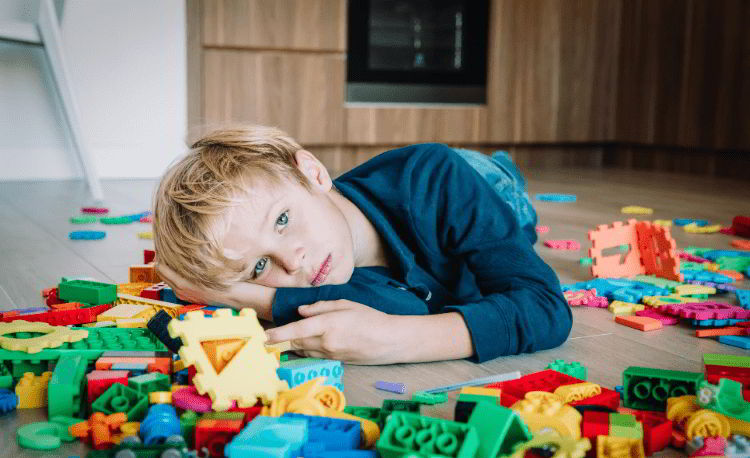10 Signs and Symptoms of Sensory Processing Disorder
Updated on March 12, 2024
Sensory Processing Disorder (SPD) is commonly misunderstood and tends to be misdiagnosed as either autism or ADHD. And yet the reality is that SPD is believed to affect anywhere between 5% to 15% of school-going children.
What makes this condition particularly challenging to identity is that many children with autism also have sensory processing difficulties. In fact some of the earliest academic studies on autism, including a 1943 study by Leo Kanner entitled Autistic Disturbances of Affective Contact, identified sensory hypersensitivity as a key symptom.
While there may be similarities, children with SPD experience the world in unique ways, and require their own set of tools to cope with everyday life.
What is Sensory Processing Disorder?
SPD is a condition where sensory stimuli aren’t interpreted properly by the brain and nervous system. Children with this condition tend to be either hypersensitive (oversensitive) or hyposensitive (under-responsive) to stimuli.
This can make the most common everyday experience like flushing a toilet or wearing certain types of clothing overwhelming and unbearable.

Unfortunately, many psychiatrists fail to recognize sensory processing disorder as a distinct condition as the symptoms tend to be quite diverse.
This means it isn’t seen as an official medical condition by many in the medical community, and hasn’t been included as part of the “Diagnostic and Statistical Manual of Mental Disorders” (DSM-5). Consequently, many children who present symptoms of SPD often fail to get the specialized treatment they desperately require.
Sensory processing disorder vs autism
The Institute for Sensory Processing Disorder describes SPD as a disorder which affects how the nervous system receives and responds to sensory stimuli.
Because the brain doesn’t understand how to respond to stimuli, a child is likely to over or under-react. Many of these children have sensory processing difficulties without exhibiting any signs of autism.
Autism, on the other hand, is seen to be a developmental disorder that impairs a child’s ability to communicate, interact, and behave appropriately.
Interestingly, children with autism and SPD have been found to have measurable brain differences. Studies suggest that the brains of children with sensory processing disorder have decreased connectivity in regions responsible for sensory processing.
While the brains of children with autism functioned differently in regions related to emotional development and memory.

Other noteworthy differences include the fact children with SPD have more issues with touch than children with autism. Research has also found that children with autism process sound differently to those with SPD which could help explain why many struggle with language.
Concerned your child may have SPD? Here are 10 symptoms of Sensory Processing Disorder that you need to look out for:
While SPD can be difficult to diagnose, there are distinctive behaviors to be on the lookout for. We’ve put together 10 of the most common indicators of SPD, but recommend you use this as a guide only. If you’re concerned that your child may have SPD, it’s best to consult with a doctor or occupational therapist.
1. Hyper-acute hearing
Some children with SPD have the ability to hear even the faintest sounds. For these children, auditory stimuli can seem overwhelming or distracting. You may notice that your child seems to be bothered by sounds that others simply don’t notice.
2. Hypersensitive hearing
Certain everyday sounds are intolerable for children with SPD. This could include everything from the clanking of silverware at the dinner table to traffic. Children with SPD who are hypersensitive to these sounds will react with fear and may even have a meltdown.

3. Exhibit touch aversion
It’s not uncommon for a child with SPD to reject any form of physical contact whether it’s a hug or a handshake. These children tend to be fearful or surprised by touch, and are likely to avoid contact with people even if they know them. In addition, they may have an aversion to various forms of tactile input. For instance, they may not be able to tolerate being barefoot on sand or grass, certain clothing textures, the wind blowing on their bare skin, and more.
4. Poor motor coordination
Children with SPD often have poor motor coordination, making them clumsy, awkward, and more likely to lose their balance. These children often struggle learning fine motor tasks such as holding a pencil.
5. No sense of boundaries
Your child may lack a sense of personal space when interacting with others. Not only are these children more likely to be in someone else’s space, but they tend to touch everything around them. It’s not uncommon to see a child with SPD touching strangers.
6. High tolerance for pain
Children with SPD may not notice or be indifferent when they hurt themselves. Often these children have a delayed response when they do get hurt.

7. Overly aggressive
You may notice that your child tends to be overly aggressive when playing with others. Oftentimes these children aren’t aware of their own strength and that they may be hurting someone else. As a result, these children have a hard time making friends.
8. Easily distracted
Due to heightened sensory perception, these children are often easily distracted. Most will struggle to focus in classroom situations where they’ll be fidgety and unable to sit still for long periods of time. These children tend to prefer activities which involve movement such as jumping or running.
9. Impaired language development
Some children with SPD may struggle to understand instructions and questions. They may confuse similar sounding words and tend to struggle enunciating clearly. Many also have difficulty reading aloud.
10. Difficulty learning new things
Children with SPD tend to struggle learning new activities, and often take longer than other children to master the same activity. This can lead to mild developmental delays.
The signs of SPD vary greatly and aren’t always easy to diagnose. There are, however, certain behaviors that require attention and treatment. By diagnosing SPD early you can ensure your child gets the necessary tools to lead a fulfilling life.
Safety Concerns of SPD and How AngelSense Can Help
Many children with sensory processing disorder can become overwhelmed, anxious, and stressed. This can lead to them acting out and putting them in harm’s way.
The AngelSense Assistive Technology is an advanced safety device to keep children with special needs safe.

Wandering
To get away from stimuli that is overwhelming for them, children with autism and SPD will quickly run away with no warning. They don’t think about the danger or consequences as they flee whatever it is that’s causing them discomfort. With AngelSense you’ll get a notification as soon as they elope and the lifesaving emergency tools ensure that you’ll find them as quickly as possible. You can also call them using the assistive speakerphone on the device that answers automatically. This helps you to calm them down, tell them to stop, talk to nearby people, listen-in to hear what’s going on around them, and give them directions.
Meltdowns
Meltdowns are oftentimes a result of sensory sensitivities. When your child isn’t with you a meltdown can be hard to manage. As their parent, you know the best ways to calm and comfort your child and AngelSense gives you the ability to do that from anywhere at any time with the device’s 2-way speakerphone. There is also an SOS Call Request Button on the device that they can easily press to let you know they need you when they are starting to feel anxious.
Hiding
Sometimes when a child with SPD gets overwhelmed they will find a place to hide. In fact, they can become hiding experts, making it extremely difficult to find them. The AngelSense GPS tracking device comes with a remote activated alarm that can be activated from any distance. It’s loud enough to be heard clearly and help you safely find your hiding child.
Sensory Sensitive Wearing Options
AngelSense comes with a soft, durable wearing sleeve and fasteners that are non-removable. There are also optional wearing accessories that are all made especially for those with sensory sensitivities like the belt and undershirt with a compression fit and no tags.
Get peace of mind from AngelSense, the groundbreaking AI-based assistive technology designed to enhance safety and peace of mind for individuals with special needs and their families. Our solution ensures you stay connected with your loved ones, empowering a higher level of independence while maintaining safety. Learn more about how AngelSense can make a difference for your family.

